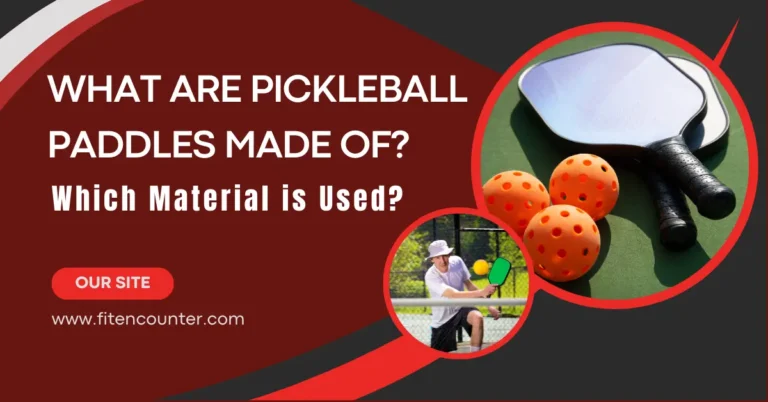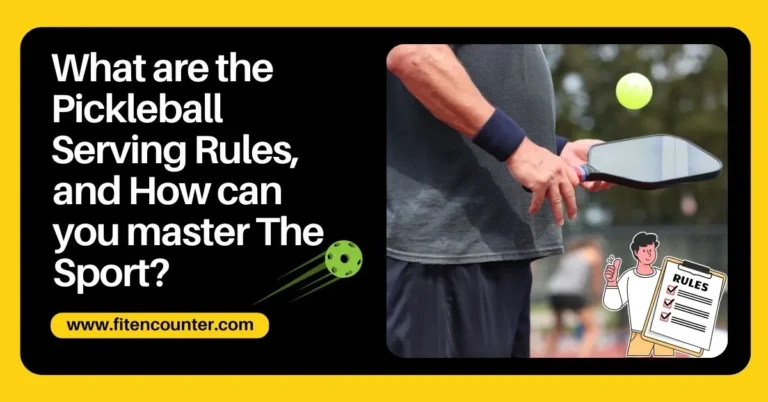Rubber Soles vs. Plastic Soles – Which One to Choose?
Rubber Soles vs. Plastic soles? Which one to choose while buying pickleball shoes? In case you are feeling overwhelmed, keep your requirements in your mind first. If you need durable and wear-resistant shoes on slippery surfaces, rubber soles are the best, but for indoor use and a stylish look, you prefer plastic soles with higher flexibility.
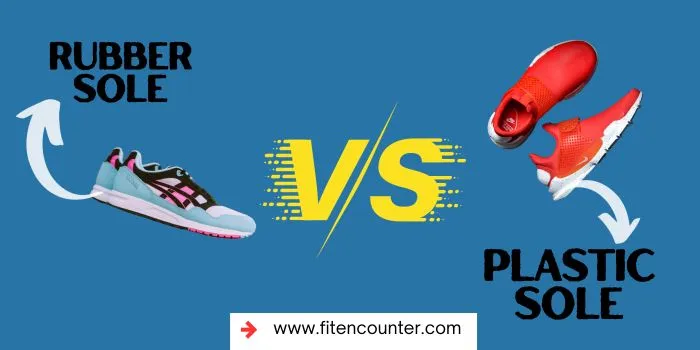
But, when you go buying, there are many other factors to consider including the price tag, indoor or outdoor use, softness or hardness, and comfort as well.
I went through the same feeling and found a way to choose my pickleball shoes with compatible soles. You can learn through my personal experience when I decided which sole I should opt for, rubber sole and plastic sole. So If you are still indecisive and need more in-depth analysis, let’s explore all of its factors in detail.
Rubber Soles vs. Plastic Soles
| Criteria | Rubber Soles | Plastic Soles |
|---|---|---|
| Traction & Grip | Excellent on slippery surfaces. | Good grip, varies by design. |
| Durability | Highly durable and wear-resistant. | Durable but wears out faster. |
| Water Resistance | Precisely resistant, it keeps feet dry in wetness. | Resistant, suitable for rain. |
| Shock Absorption | Superior cushioning for comfort. | Moderate, may need extra insoles. |
| Weight | Heavier, sturdy feel. | Lighter, easy for extended wear. |
| Flexibility | Less flexible, denser material. | More flexible, molds into shapes. |
| Eco – Friendly | Often made from recycled materials. | Not biodegradable; some recyclable. |
| Maintenance | Regular cleaning, durable with care. | Easy to clean, resistant to stains. |
| Best For | Outdoor activities, and rainy weather. | Fashion styles, indoor use. |
Advantages of Rubber Soles
Traction and Grip
Rubber soles are your reliable friend, making your steps sturdy regardless of the weather. These soles are well-known for their excellent traction. Rubber’s inherent grip makes it a good choice for slick surfaces, offering stability and lowering the danger of accidents like knee pain, particularly during wet seasons.
Sturdiness
Consider your favorite pair of shoes. How would it feel if they remained as dependable and durable trip after trip? Rubber soles are extremely tough and resistant to wear and tear. They can resist a variety of terrains and weather conditions, guaranteeing that your footwear investment lasts for a long time.
Water Resistance
Because of the inherent qualities of rubber, rubber soles are water-resistant, making them perfect for wet and damp circumstances. Even in puddle-filled streets, your feet stay dry and protected. Rubber soles transform the wet ground into your playground for your feel, allowing you to enjoy the weather without having to worry about soaked socks.
Stress Absorption
Rubber soles absorb stress well, offering cushioning and comfort. This function is especially useful for people who spend extended periods of time on their feet since it reduces weariness and pain.
Eco – Friendly Options
As environmental sustainability becomes more important, many rubber soles are now made from upcycled or recycled rubber components. Choosing such alternatives helps to promote eco-friendly fashion.
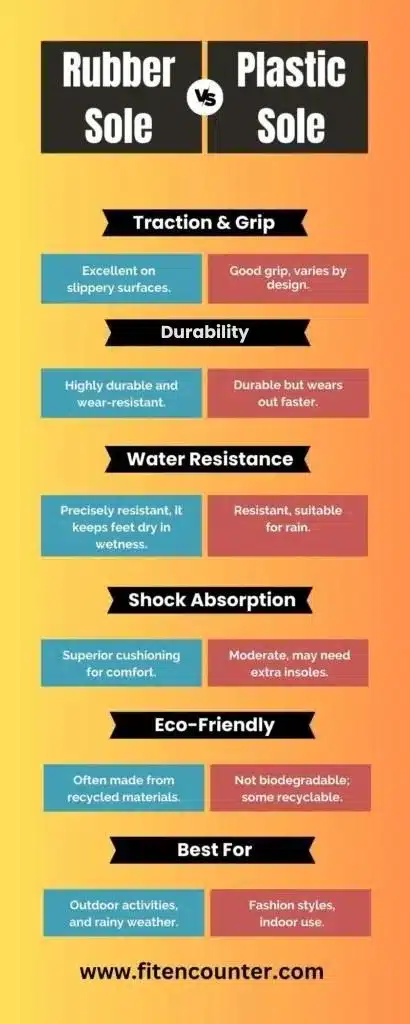
The Versatility of Plastic Soles
Lightweight
Plastic soles are considerably lighter than rubber soles. This feature is especially useful in sporting footwear since it ensures agility and quickness without adding superfluous weight.
Design versatility
Plastic soles provide a great deal of shoe design versatility. They are popular in modern, attractive footwear styles because they can be molded into complicated forms and patterns.
Affordability
Plastic soles are frequently less expensive to create. This pricing results in cost-effective footwear solutions for customers of all economic backgrounds.
Chemical Resistance
Plastic soles are exceptionally resistant to a wide range of chemicals, making them ideal for industrial or laboratory applications where chemical exposure is common.
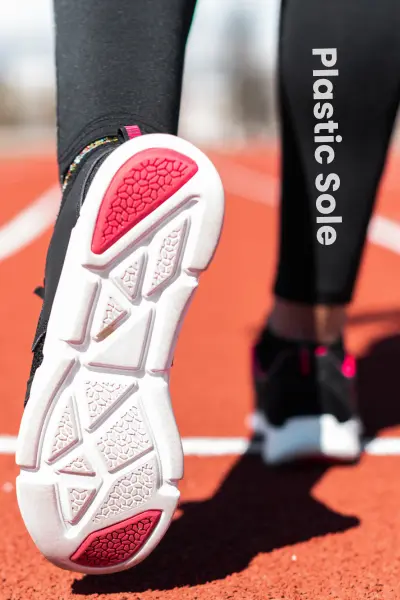
Rubber Sole vs.Plastice Sole – Which One is Right Sole for Your Needs
For Athletic Pursuits
Rubber soles are your best pick if you like sports, hiking, or other outdoor shoes activities. Their exceptional traction, durability, and shock absorption qualities promote and safeguard active lives.
For Fashion and Style
Because of their design flexibility, plastic soles appeal to fashion-conscious consumers. Plastic soles provide a wide range of modern alternatives, from sophisticated sandals to attractive boots, allowing you to express your style with flair.
Consider Occupational Requirements
Think about the expectations of your career. If your employment requires you to be exposed to chemicals, choose shoes with plastic soles. Rubber soles, on the other hand, are the safest choice if your workplace has a high risk of slips and falls.
Environmental Considerations for Rubber and Plastic Soles
As the environmental concerns are increasing, it’s critical to take into account the environmental friendliness of your footwear selections. Rubber and plastic soles may both be made in a sustainable manner by recycling and upcycling. Natural rubber, when derived ethically from rubber trees, has a lower environmental impact, making it an appreciated choice for environmentally savvy consumers.
Frequently Asked Questions
Which sole material is better for the environment, rubber or plastic?
Rubber is often thought to be more ecologically-friendly, especially when supplied from sustainable rubber tree plantations. Plastic, on the other hand, is made from fossil fuels and is not biodegradable, making it unsuitable for the environment.
What is the best sole material for hiking or running shoes?
For sports like hiking or jogging, rubber soles are ideal. They provide stability and reduce the danger of accidents by offering superior traction, shock absorption, and durability.
Can rubber or plastic – soled shoes be recycled?
Some rubber soles, particularly those manufactured from recycled rubber, are recyclable. Plastic soles of some varieties are also recyclable.
Can plastic soles provide the same level of comfort as rubber soles?
Yes, because of advances in shoe technology, plastic soles can now give equal comfort. Many shoes with plastic bottoms have additional cushioning and support for improved comfort.
Are rubber soles suitable for both indoor and outdoor pickleball courts?
Yes, rubber soles are versatile and can provide adequate grip on different court surfaces, including indoor wood or composite floors and outdoor asphalt or concrete surfaces.
Conclusion
There is no clear winner in the rubber soles vs. plastic soles riddle. Your selection should be based on your particular wants, lifestyle, and environmental standards. Rubber soles excel in traction, durability, water resistance, and shock absorption, making them perfect for practical applications in unpredictable conditions. Plastic soles, on the other hand, provide lightweight, adaptable, and fashionable solutions for fashion-conscious consumers as well as certain professional requirements.
Understanding the complexities of these materials enables you to make a decision that is tailored to your own preferences and circumstances. So, given these details, the next time you walk into a shoe store, you can confidently choose footwear that not only compliments your style but also provides the comfort and utility you want for your daily excursions. Remember that your choice of soles is about more than simply fashion; it’s about comfort, durability, and matching with your needs of sports, style, requirements, and of course, the budget.


